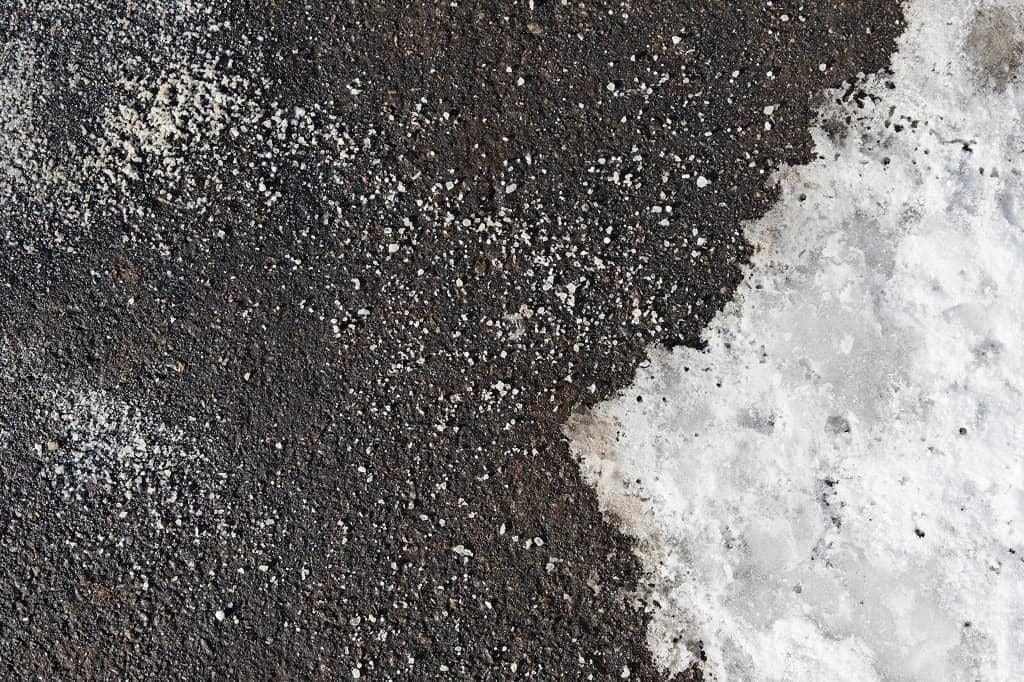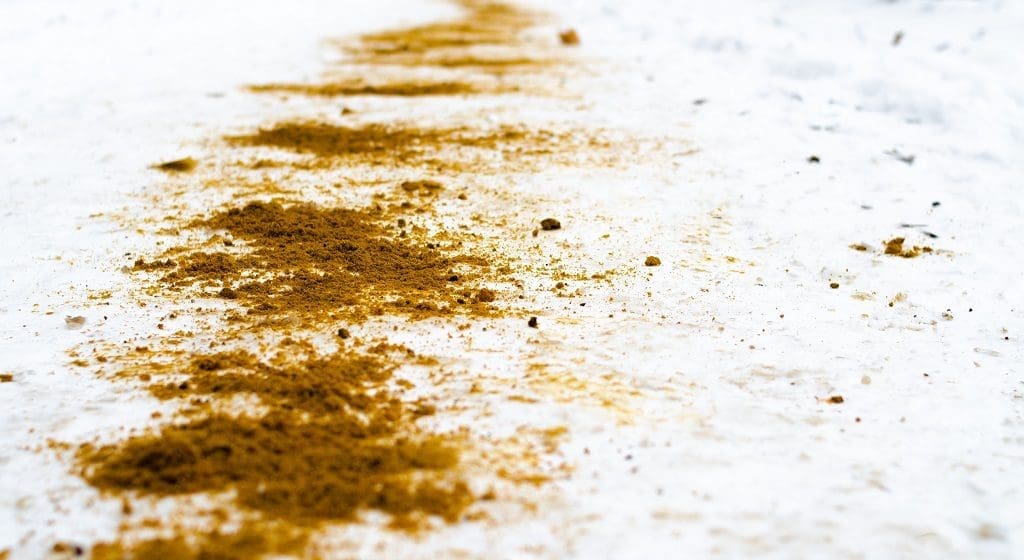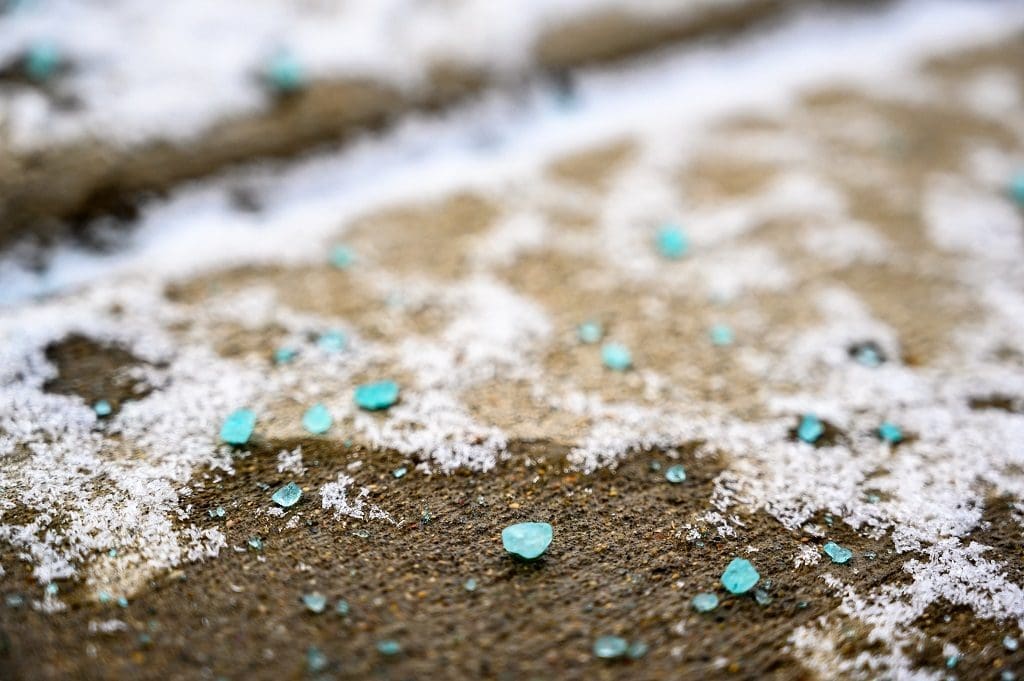Most people know that when the winter comes, you should typically be prepared to use sand or salt for driveways to prevent them from becoming iced over and to protect against a buildup of snow. However, there are various pros and cons of road salt that you should be aware of, as well as drawbacks and benefits to using sand as an alternative.
At Earth Development, we don’t just offer convenient snow removal services across Minnesota, Ohio, and Wisconsin, but we also believe in informing our readers so they can make the right decisions. In this piece, we’ll explore the pros and cons of these two most popular options for snow and ice control.
Sand vs Ice: Which One Is Better?
Whether you’re a homeowner or a business owner, there are many variables you should first consider before deciding between salt and sand ice melt.
Before we cover those variables, and before you choose between sand or salt for your driveway, it’s also important to note that salt is designed to melt ice, while sand is ideal for improving traction.
When to Use Salt for Snow and Ice?

Salt has long been one of the most popular deicing agents. It’s popular because it works. However, as with anything in life, there are benefits and drawbacks that you should always be aware of.
Why Salt Works:
- Salt effectively melts ice by lowering the freezing point of water. When applied to a driveway or sidewalk, it prevents ice from forming.
- Salt also melts ice that has already formed, and when applied regularly, helps avoid a buildup of snow and ice and keeps driveways and pavements clear.
- Salt is abrasive, meaning that it can improve traction on slippery surfaces as well as melting the ice.
Potential Drawbacks of Using Salt Include:
- Salt is corrosive, meaning that over time, it can cause damage to paving stones and concrete.
- As salt mixes with water it forms a brine. That brine can then flow off your driveway and into your lawn and borders, potentially killing your plants.
Salt is ideal for places with high footfall, like business driveways, walkways, and parking lots. It’s also perfect for residential driveways, but you should always consider the impact that it may have on your lawn and plants.
And remember – salt and sand work differently. People often ask “what melts ice faster, salt or sand?”
The answer is salt because sand doesn’t melt snow.
When to Use Sand for Snow Clearing?

Sand is a good alternative to salt when you cannot risk using an abrasive substance that could potentially damage plants or your concrete surfaces. It is important to recognize, however, that sand is specifically used to increase traction and not to melt ice.
Here are the most important pros to consider when choosing whether to use salt or sand for snow clearing.
Pros:
- Sand is not corrosive. It means that it will not damage concrete or paving stones in the long run.
- Sand sticks around for longer, improving traction even when ice has already formed.
- Sand does not form brine or kill plants or grass.
Cons:
- Sand doesn’t melt ice, and ice can form on top of it.
- It’s messy. Sand may be tracked inside your home or business from outside.
- Too much sand causes problems in drains. Clogged drainage will need to be cleaned in the spring or summer.
Choosing between salt and spread sand on driveways is all a matter of weighing up the pros and cons and determining what is right for you. You may wish to consider whether you have a lot of foliage and greenery near your driveway or pavement and whether your drainage risks getting blocked.
Are There Any Sand and Salt Alternatives?

Salt and sand aren’t the only deicing agents out there, but they are two of the most popular. At Earth Development, we offer our clients the choice between a wide range of products all designed to suit their exact needs.
Many alternatives, however, are technically different variations of salt. They are products that lower the freezing temperature of the water, and each one achieves this in different ways and to differing degrees.
Calcium Magnesium Acetate
Known as CMA, this can prevent ice from forming to temperatures up to -27°F. However, it is typically more expensive than regular salt.
Nitrogen-Based Products
Nitrogen-based products prevent ice in temperatures up to -20°F.
Potassium Chloride
Known as KCI, this product is safer for pets and has a freezing point of -12°F, meaning it’s not the most effective product for cold temperatures.
Magnesium Chloride
Magnesium Chloride is slightly less corrosive than other products and can absorb moisture from the air at 32% humidity, which means it can more quickly melt ice.
Calcium Chloride
Calcium chloride (CMA) can stop ice from forming to temperatures up to -27°F and is one of the most environmentally friendly salts you can buy. However, it is generally more expensive.
Earth Development Has Got You Covered This Winter
Earth Development works with homes and businesses across Wisconsin, Ohio, Minnesota, and beyond. We are familiar with the wide range of deicing agents, and we can help you choose the right one that suits your budget and overall requirements.
With lots of choose from, it’s always important to speak to snow and ice removal experts – and we’re always happy to help! Call the Earth Development team for a consultation and a free quote today.
